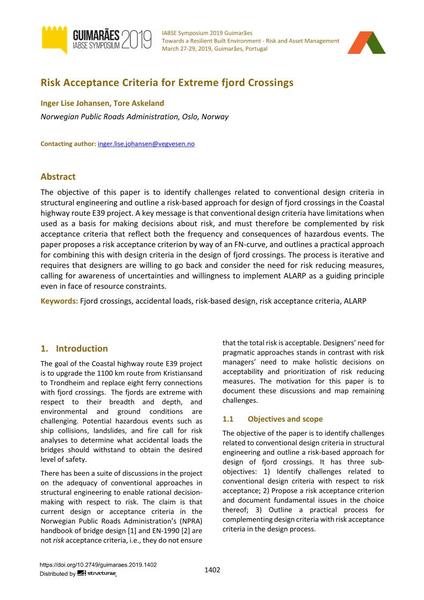Risk Acceptance Criteria for Extreme fjord Crossings

|
|
|||||||||||
Détails bibliographiques
| Auteur(s): |
Inger Lise Johansen
(Norwegian Public Roads Administration, Oslo, Norway)
Tore Askeland (Norwegian Public Roads Administration, Oslo, Norway) |
||||
|---|---|---|---|---|---|
| Médium: | papier de conférence | ||||
| Langue(s): | anglais | ||||
| Conférence: | IABSE Symposium: Towards a Resilient Built Environment Risk and Asset Management, Guimarães, Portugal, 27-29 March 2019 | ||||
| Publié dans: | IABSE Symposium Guimarães 2019 | ||||
|
|||||
| Page(s): | 1402-1409 | ||||
| Nombre total de pages (du PDF): | 8 | ||||
| DOI: | 10.2749/guimaraes.2019.1402 | ||||
| Abstrait: |
The objective of this paper is to identify challenges related to conventional design criteria in structural engineering and outline a risk-based approach for design of fjord crossings in the Coastal highway route E39 project. A key message is that conventional design criteria have limitations when used as a basis for making decisions about risk, and must therefore be complemented by risk acceptance criteria that reflect both the frequency and consequences of hazardous events. The paper proposes a risk acceptance criterion by way of an FN-curve, and outlines a practical approach for combining this with design criteria in the design of fjord crossings. The process is iterative and requires that designers are willing to go back and consider the need for risk reducing measures, calling for awareness of uncertainties and willingness to implement ALARP as a guiding principle even in face of resource constraints. |
||||
